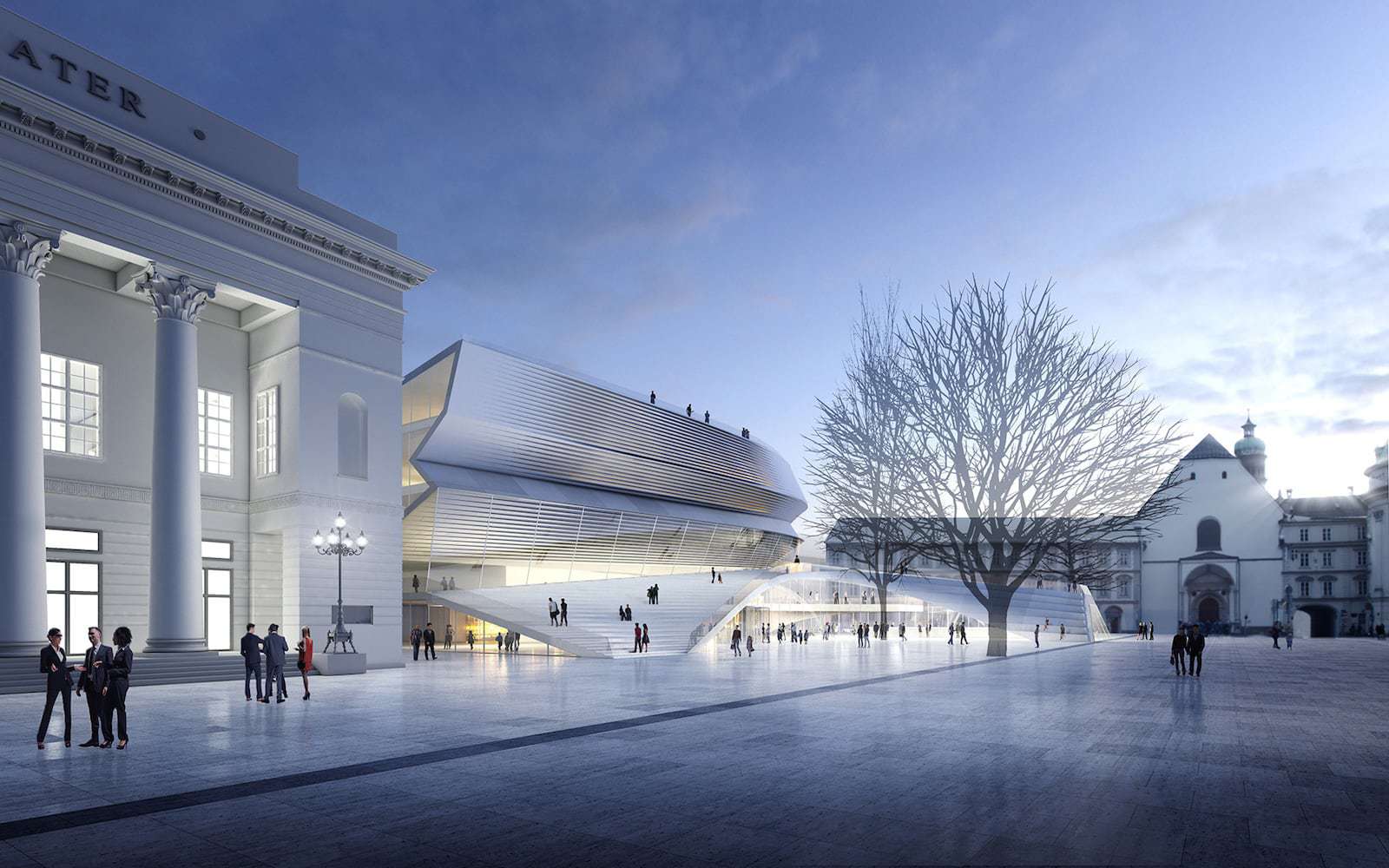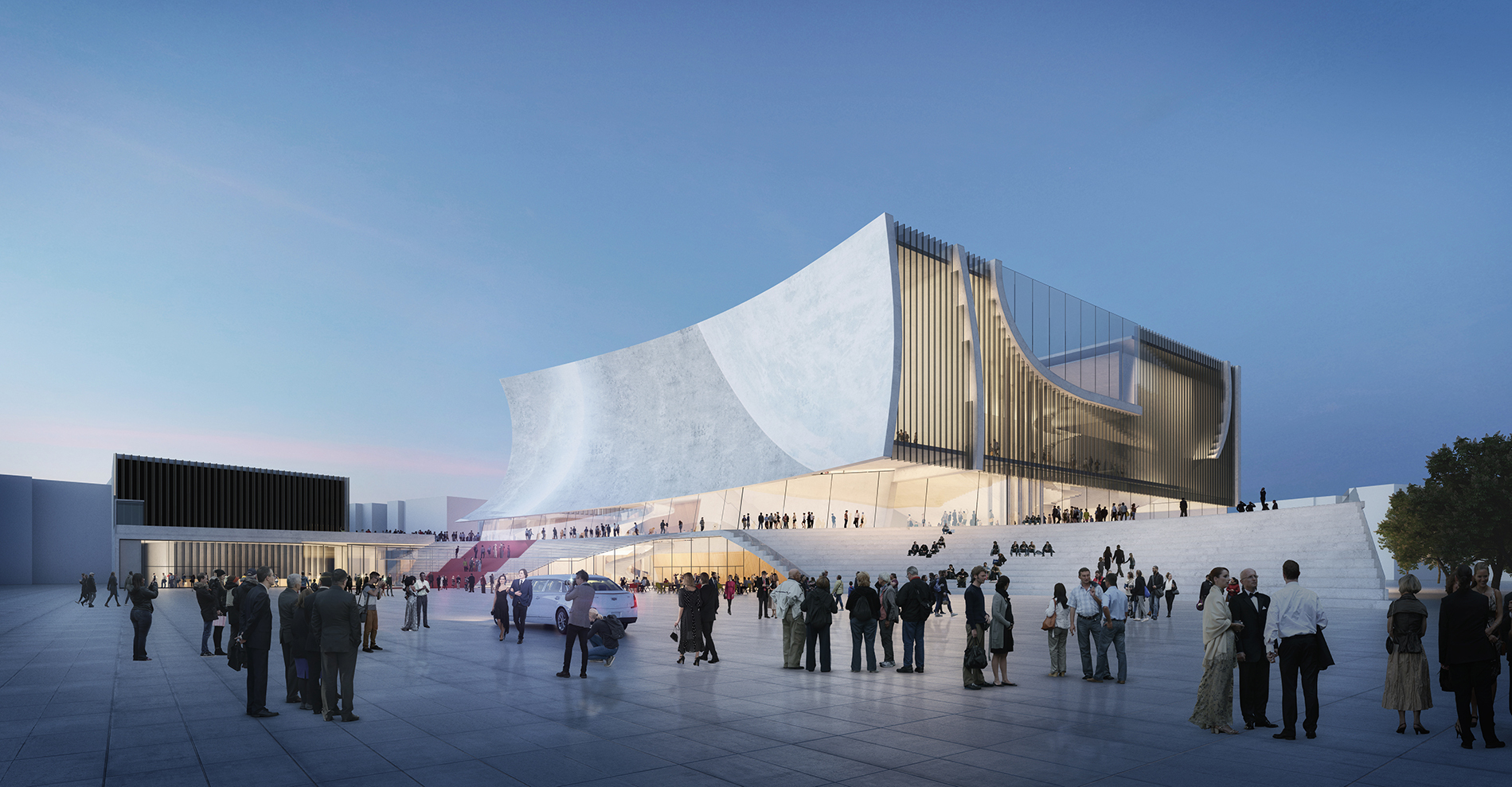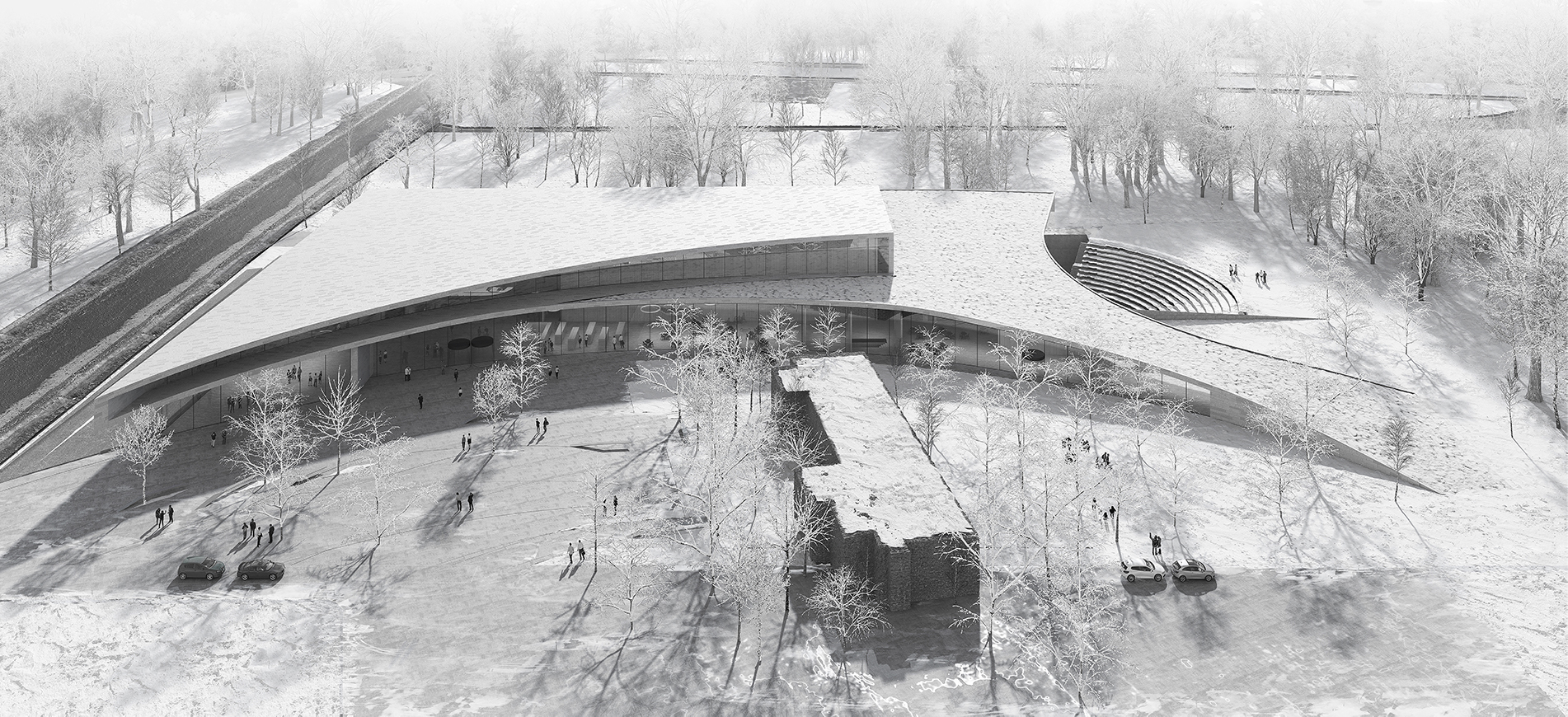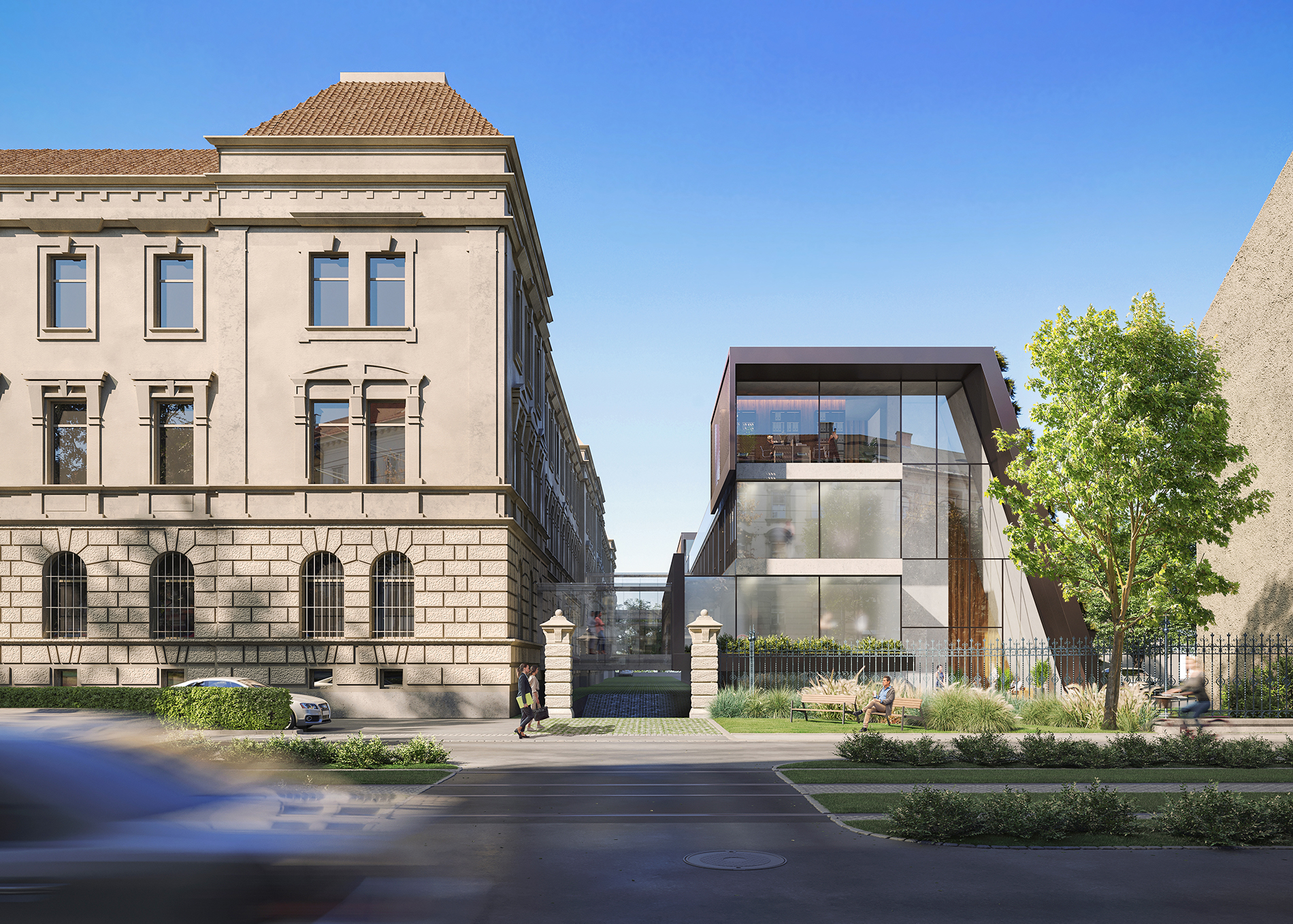The RED PLATE penetrates the existing building to the north-east and unfolds along the feeder road to the tangent. Towards the south-west, the slab is slightly modified, folding down to the courtyard level as a staircase on the one hand and tilting slightly upwards on the other to connect to the existing gallery in the hall interior along Franz-Grill-Strasse.
Balloon hall in the Vienna Arsenal
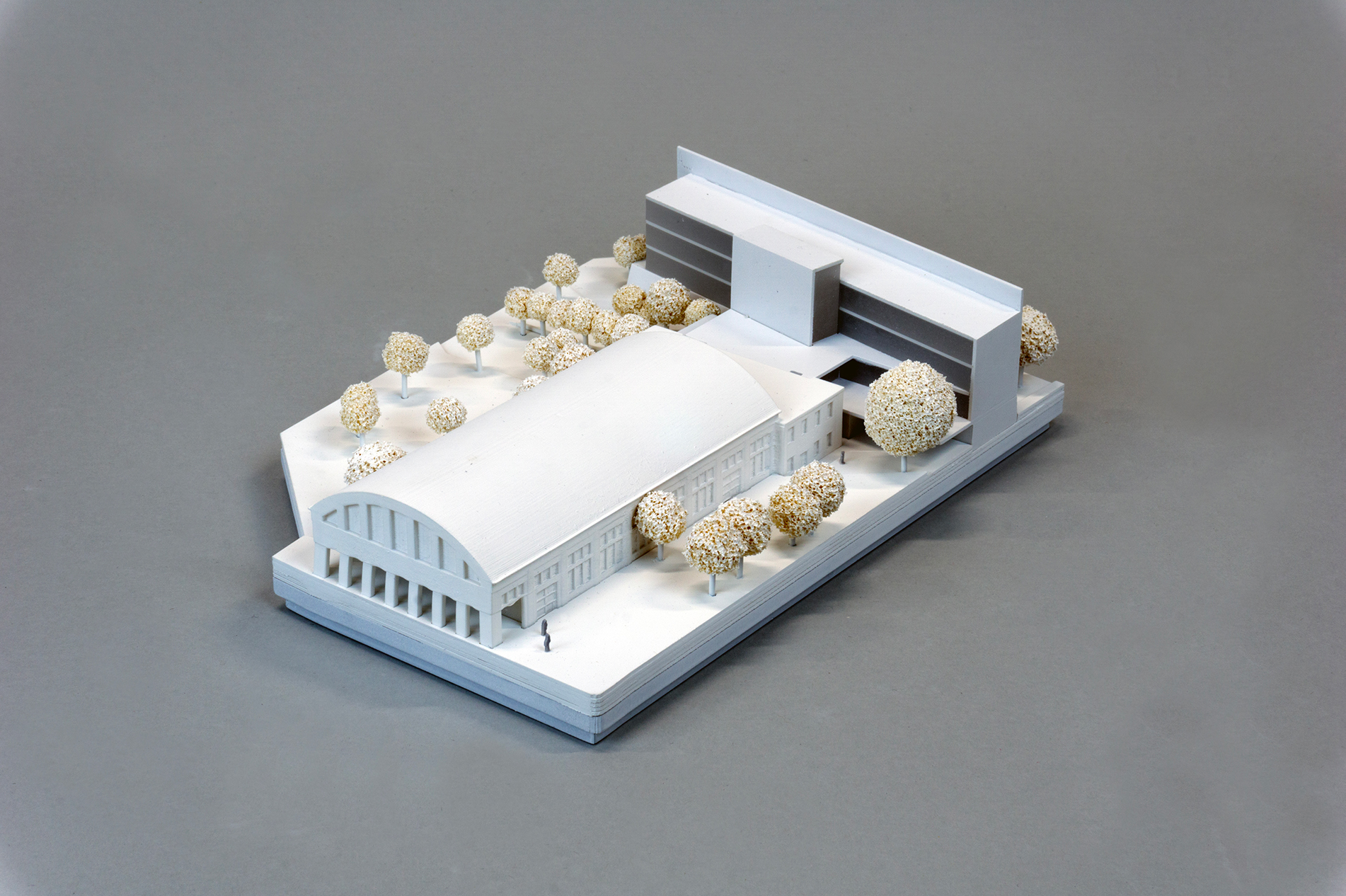
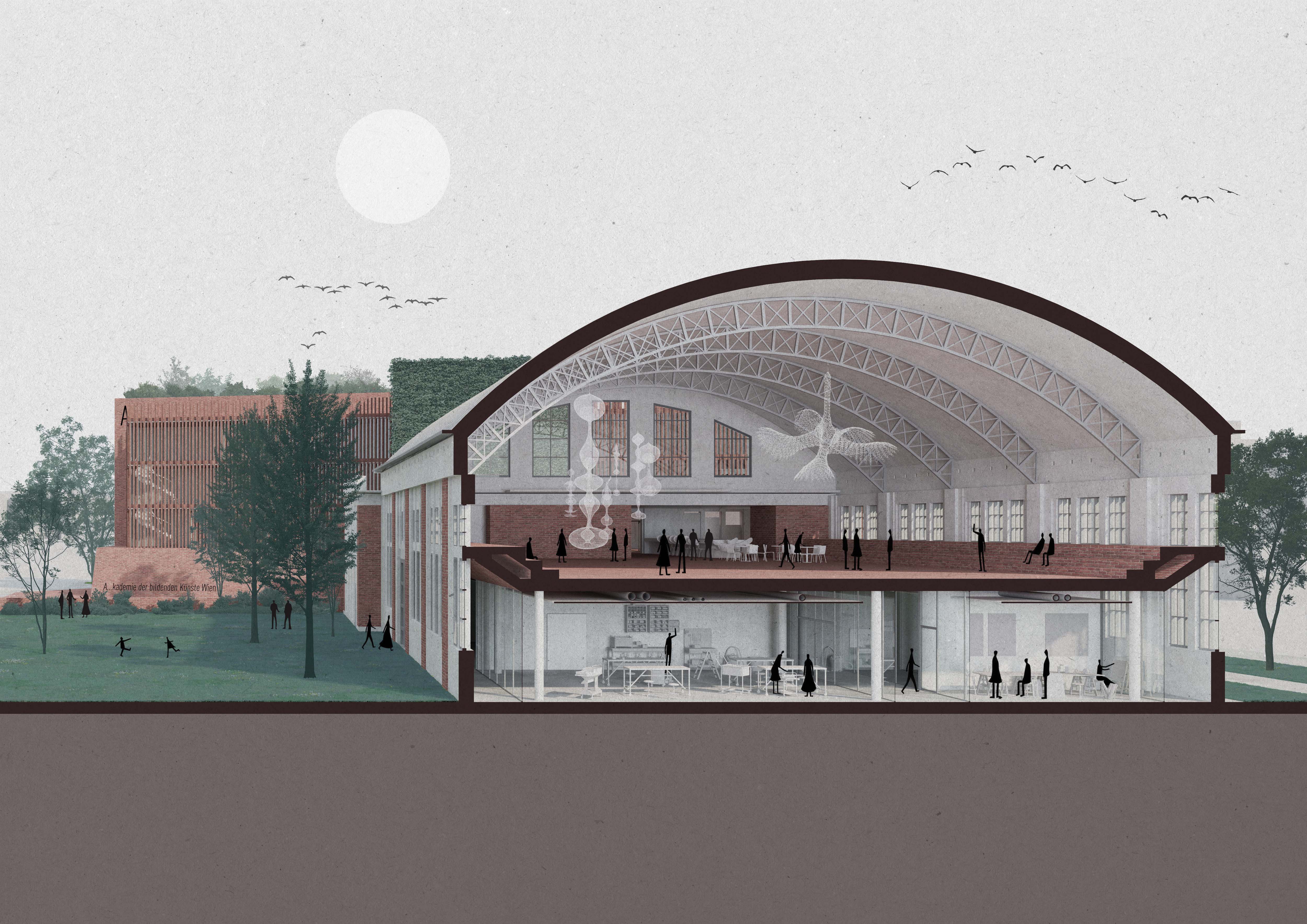
A RED PLATE is inserted into the balloon hall - quite simply ... it determines the essentials.
Year
2023
Venue
Vienna
State
Competition
Category
Culture
Size
4.215 m²
Year |
Venue |
State |
Category |
Size |
|---|---|---|---|---|
2023 |
Vienna |
Competition |
Culture |
4.215 m² |
Year
2023
Venue
Vienna
State
Competition
Category
Culture
Size
4.215 m²
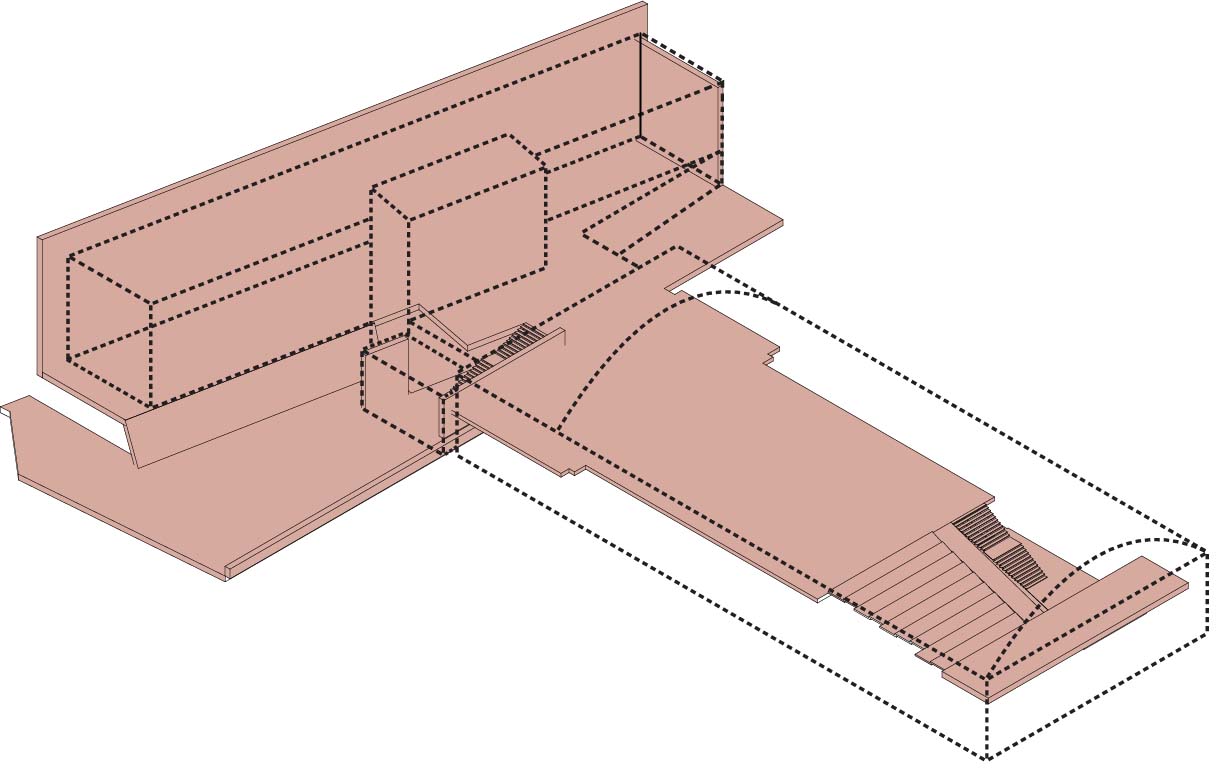
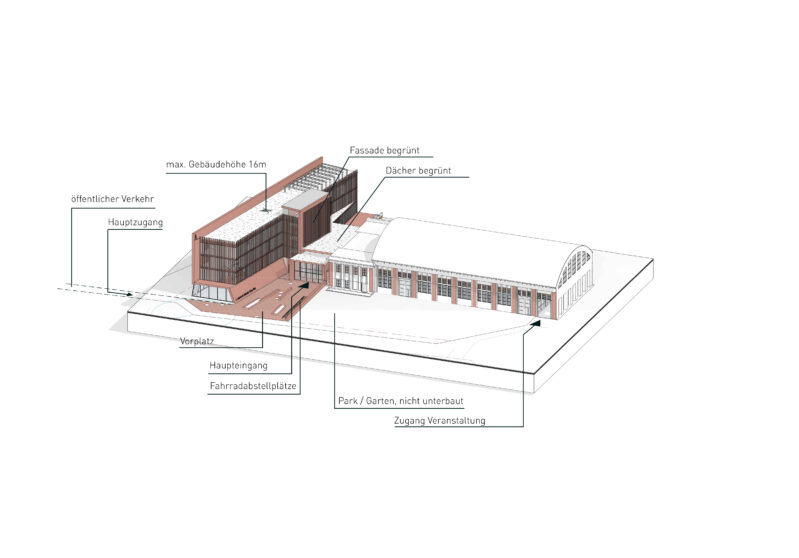
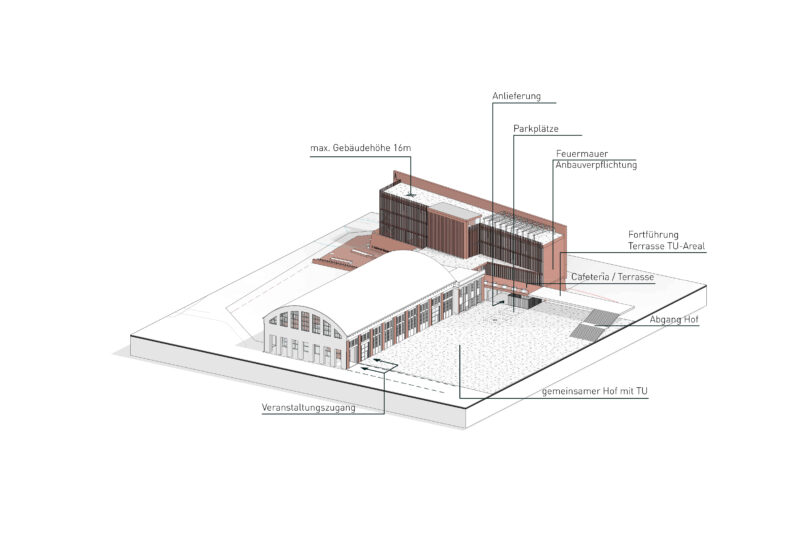
Below this RED PLATFORM, i.e. below this horizon, practically all the studio spaces are accommodated as a continuous zone, supplemented in part by offices. This creates spacious loft-like rooms at ground floor level, which can be flexibly organized and used. All rooms are therefore easy to reach and can be easily accessed with appropriate transport facilities directly from the delivery area. In the north-east, the other programs are stacked on their respective levels
along the upward-folding RED PLATFORM on the side facing away from the tangent. The development of the property is determined by the RED PLATTE: coming from the public transport connections - and thus, as expected, from the main direction - one enters the area from the north at the intersection of Franz-Grill-Straße and the Tangentenzubringer. The red brick paving opens up the semantics of the main protagonist of the architectural intervention.
In terms of urban planning, the concept is designed to give the balloon hall the best possible autonomy.
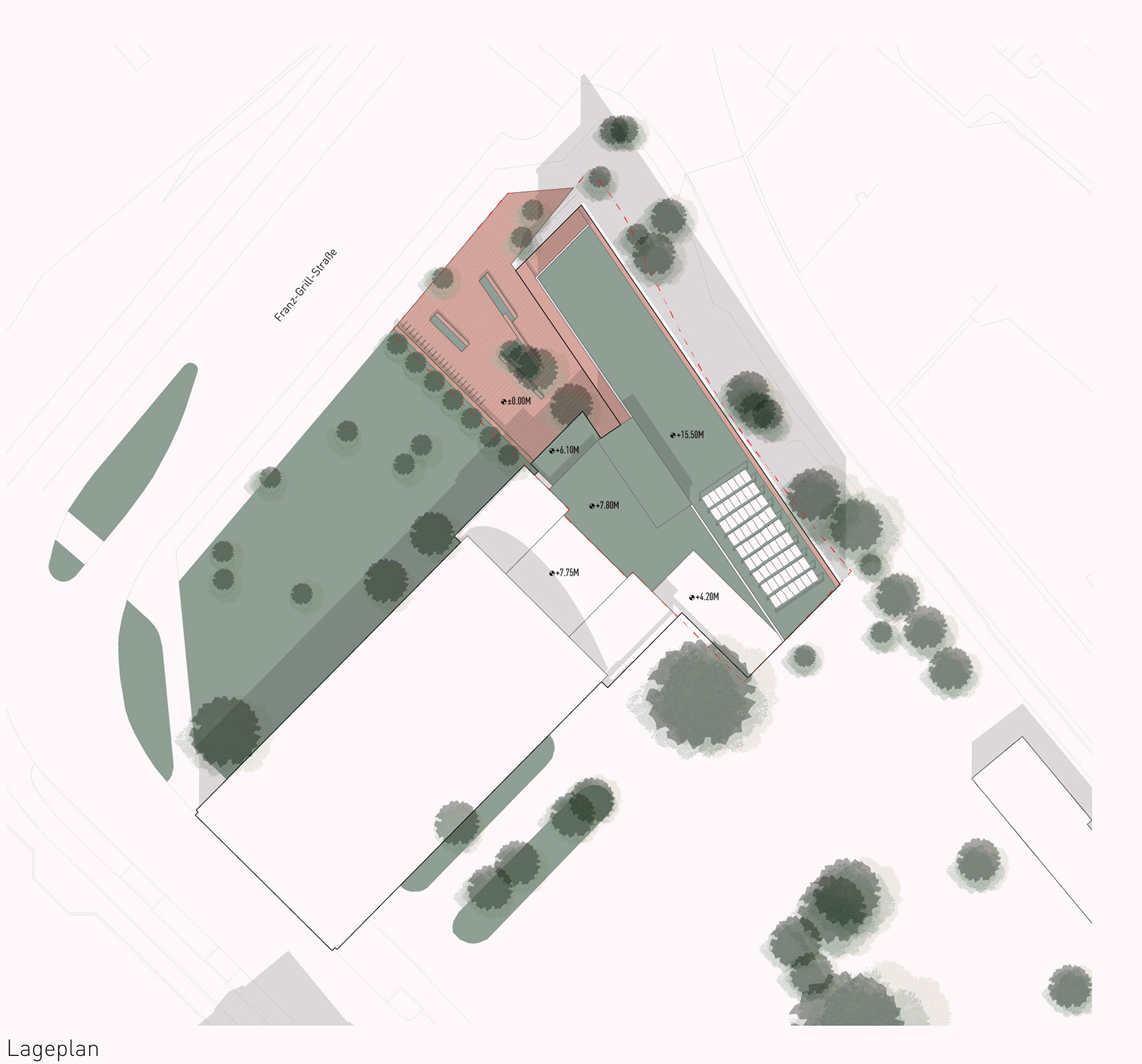
The extension connects to the hall with an articulated joint. The slender structure of the new building turns away to the north-east, so to speak, so that a view of the balloon hall opens up as soon as possible when entering the site. At the same time, this creates a kind of funnel as an access space towards the northern entrance. With its firewall, the new building connects to the future TU site at the specified location and extends almost as far as the intersection of Franz-Grill-Straße and the feeder to the tangent.
The volume and appearance of the Balloon Hall thus remain more striking in their perception as the main motif of the Academy of Fine Arts. The area between Franz-Grill-Straße and the Ballonhalle will be kept completely free and will be designed as a park or garden. With its location and orientation, the event access in the south activates the later courtyard towards the TU campus, as envisaged in the urban planning master plan.

The balloon hall is essentially left untouched in its components
The RED PLATFORM connects to the horizontal transom of the façade structure by means of a cove. This has several advantages: the full height of the windows is used to let light into the studios, the opening along this outer edge mutates into an elongated bench inside or into exhibition platforms to the left and right of the assembly hall, the cove is designed as a hollow body and contains the necessary building services to supply the assembly hall.
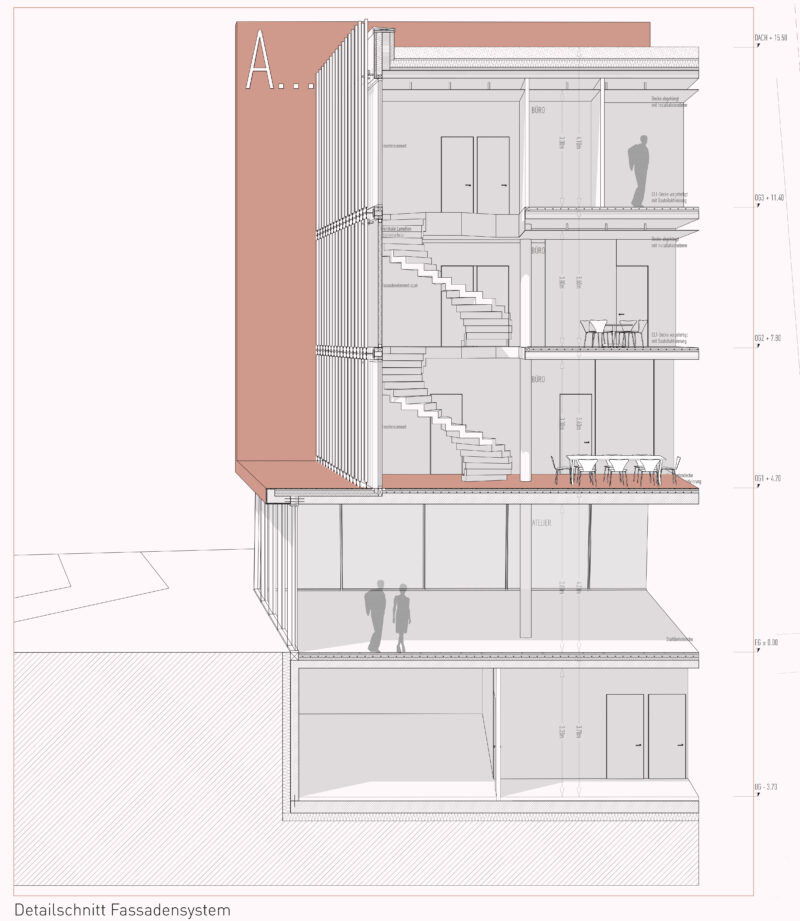
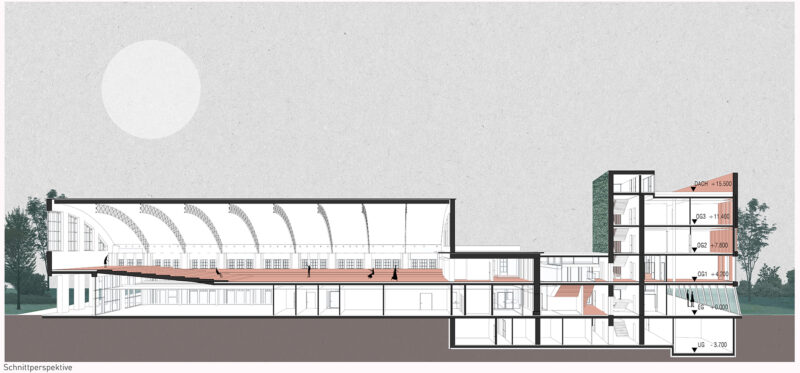

From the entrance level after the access staircase of the northern entrance, students and teaching staff can also directly reach the seminar rooms with their pre-zones, as well as the library. The cafeteria with its terrace in front towards the later TU campus serves as a link between these different directions and functions. It is intended that this level will be taken up by the TU campus and continued as a level of social interaction. On the TU campus, there could then be an exit into the courtyard between the two academic institutes to close the circle of public, social activities.
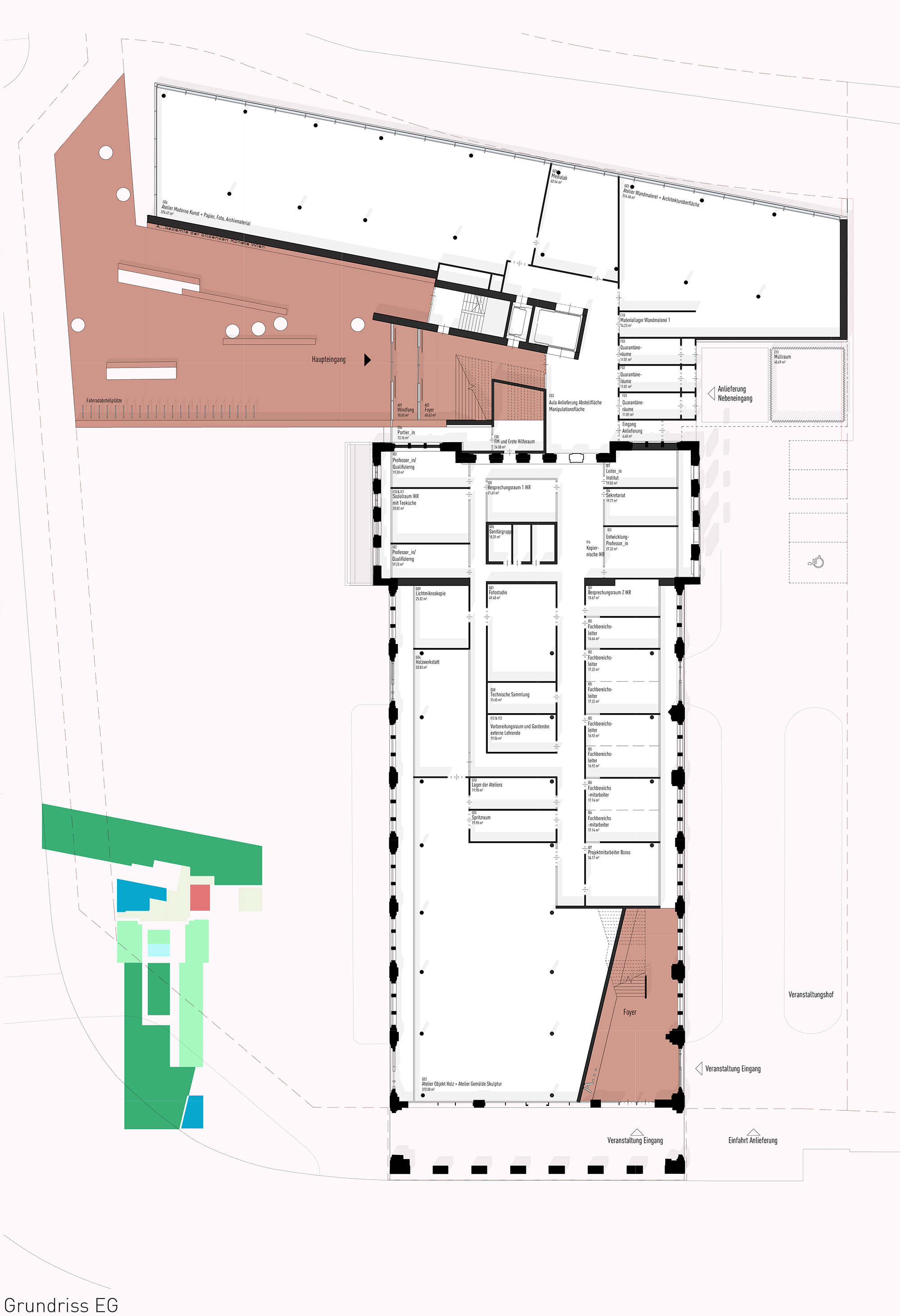
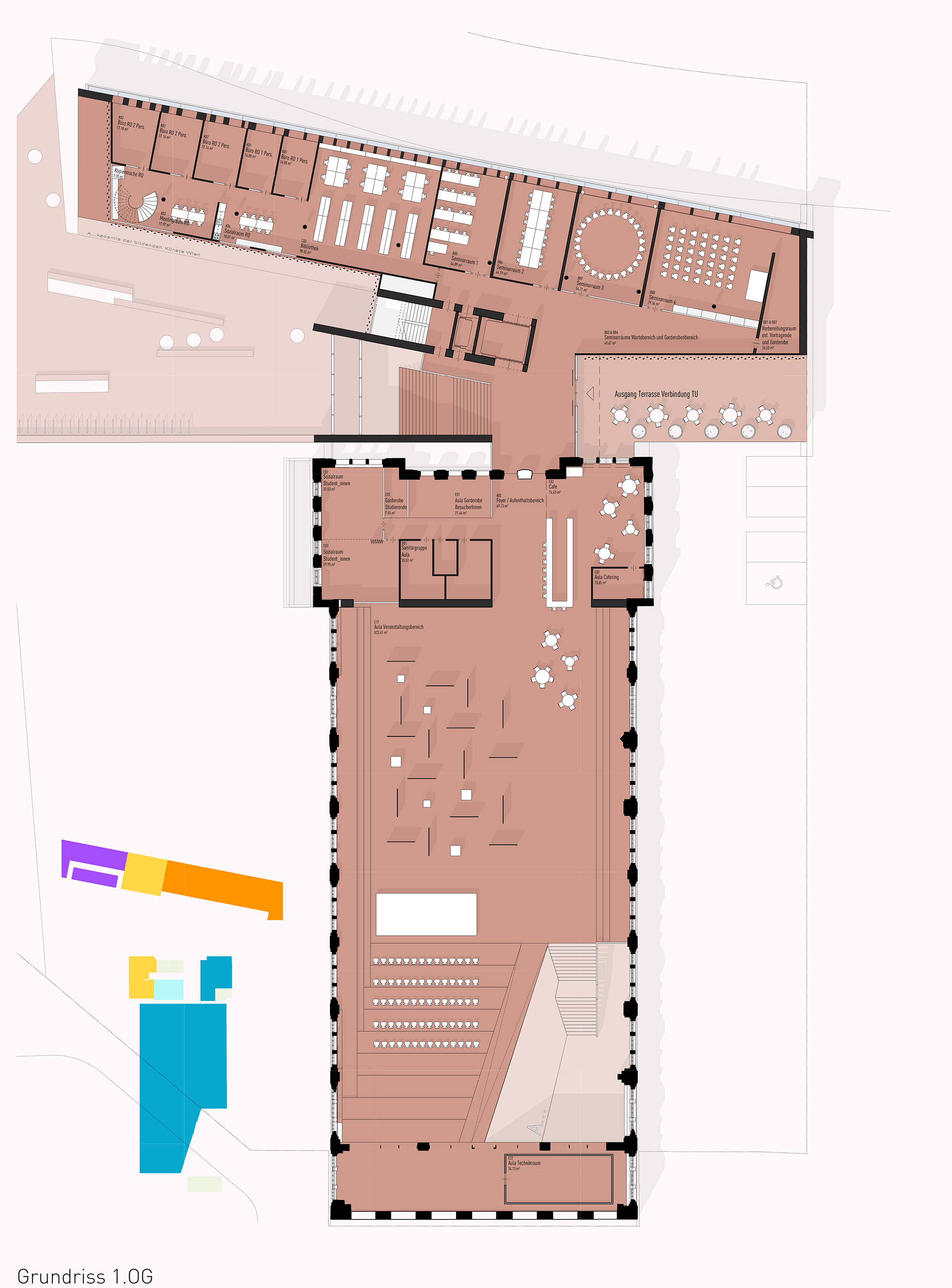
Architecture
Pichler & Traupmann Architects
Design Team
Bartosz Lewandowski (Team leader)
Anna Chakhal-Salakhova
Patrik Drechsler
Benjamin Sachsalber
Rafal Szczglowski
Stefan Zimmermann
Client
Bundesimmobiliengesellschaft mbH (BIG), Vienna
Hard facts
Start of planning: 2023
Usable floor area: 2.306 m²
Gross floor area: 4.215 m²
Location: Vienna
Function: Center for Materials Science in Art and Conservation for the Academy of Fine Arts
Scope: EU-wide open, single-stage realization competition
Rendering
pxt
Model
Harald Schmidt, Vienna
Award
2nd Place
